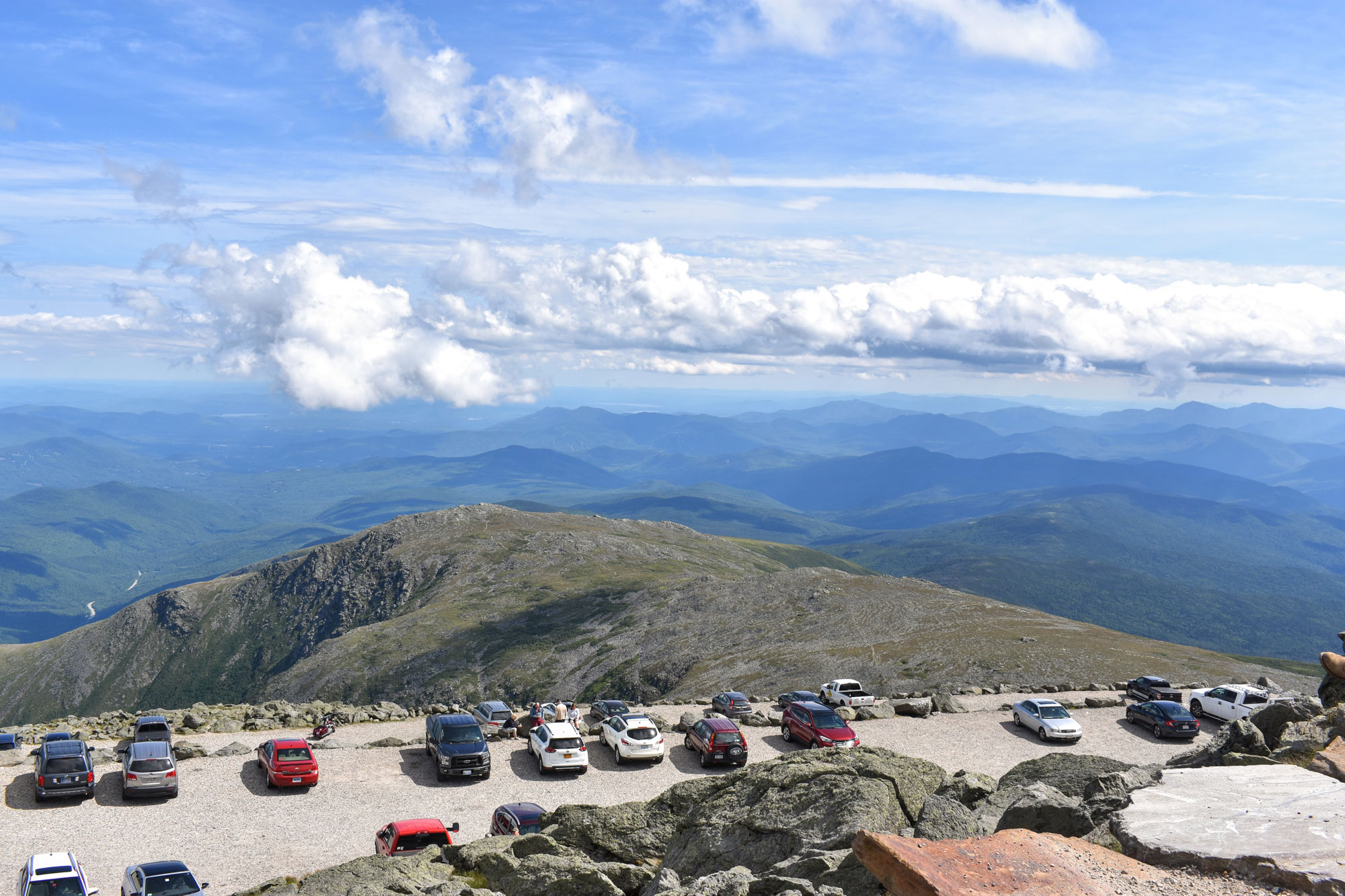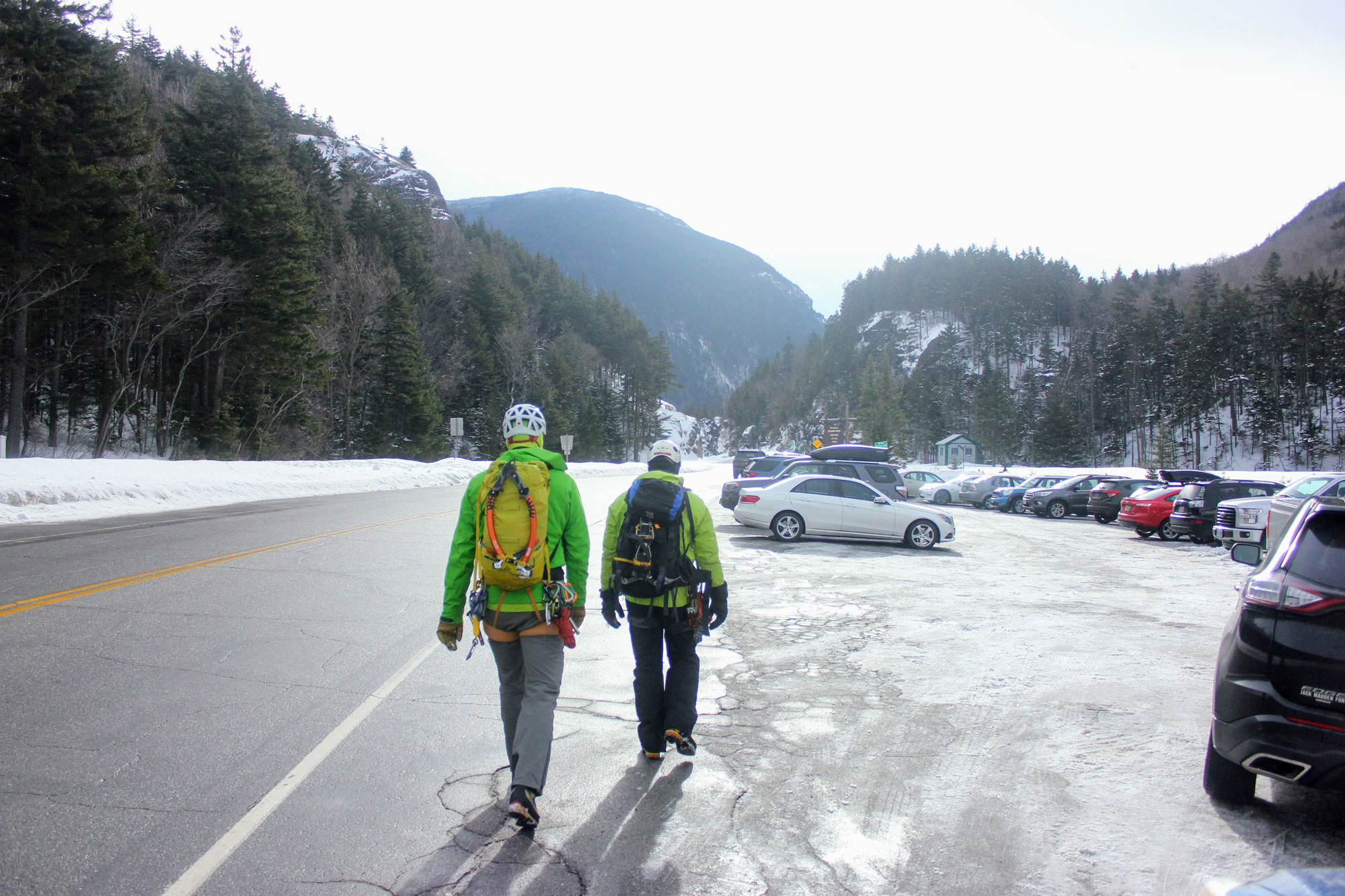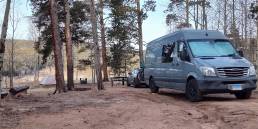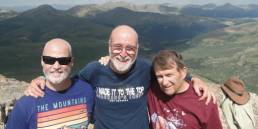Everybody has their “signature spot” in the White Mountains—the place they return to again and again for their dose of the great outdoors. You’ve seen it change and transform from season to season and year to year. And if you’ve been to that spot on a recent weekend or holiday, you’ve likely noticed something else: a lot more people. The Whites have gotten pretty crowded over the last few years, especially recently, as users discovering the outdoors in the wake of the pandemic are (understandably) flocking to these same destinations for the same reasons as us. Sure, New Hampshire’s motto is “live free or die,” but crowds are stressing these precious resources more than ever. It’s time to do something about it.
Let’s start with the low-hanging fruit. Overflowing parking lots and cars parked along the side of the road are as common as black flies in spring and bad weather on Mount Washington. Being unable to find parking should be a sign to all of us: It might be the morning to try out something different. It’s also up to land managers to enforce parking restrictions to help control the crowds. Keeping our wilderness pristine could start with all of us recognizing that a packed parking lot means there are already too many people on the trail.
It has been the practice at Katahdin for years—Limiting the number of day hikers on the mountain is done not through a permit system, but by requiring hikers to make a reservation to park.
The idea of limiting access to popular hikes through parking is not a new solution. It has been the practice at Katahdin for years—Limiting the number of day hikers on the mountain is done not through a permit system, but by requiring hikers to make a reservation to park. But a permit system, like the one mountaineers are required to use to “reduce crowding and protect natural features” before summiting peaks like Mount St. Helens is another option. From May 15 to October 31, just 110 climbers are allowed on the mountain per day.
The recent enforcement of prohibitions on highway parking in Franconia Notch proves that parking restrictions have merit. Now, if you’re hoping to hike Franconia Ridge but the roughly 200 spaces between the north side and south side of Route 93 parking lots are full, you’ll either need to use the recently implemented shuttle or consider “bagging” these classics from a different access point.

Of course, the Franconia Notch shuttle service presents its own set of issues. On one hand, the shuttle has put an end to cars parking—and people walking—along Route 93, which is a major traffic safety improvement. And it may, in theory, encourage some hikers to go elsewhere, without fully mandating it. But in reality, the shuttle has done little to reduce the steady stream of hikers going up and down super popular trails like Falling Waters, the Old Bridle Path, and Hi-Cannon.
That brings us to the heart of the overcrowding problem: our own routines. In the end, it may be up to us. Every weekend, thousands flock to the Whites for day hikes and bigger weekend-long outings. Undoubtedly, recreationists are a huge economic boon for the region, and we have no quarrel with their general presence. But when recreationists arrive at the same trailhead at the same time with the same objective, our presence leaves a mark. Crowding at trailheads stresses surrounding neighborhoods, while too-many hikers on the trails themselves result in overuse, path widening, and stress on the wildlife that call these areas home 24/7. And as places like Katahdin and Mount St. Helens have shown us, if we don’t start taking personal responsibility for how busy these places are and do our part to mitigate the crowds on our own, someone else just might—and we might not like their solution.
And as places like Katahdin and Mount St. Helens have shown us, if we don’t start taking personal responsibility for how busy these places are and do our part to mitigate the crowds on our own, someone else just might—and we might not like their solution.
Wondering how you can play your part? Well, Mike De Socio offered one option in his recent goEast piece, “Why I Hike on Weekdays.” But even if you primarily recreate on weekends, there are still things you can do. For instance, consider starting your activity at off-hours, i.e., earlier or later in the day or even recreating at night. Another way to mitigate the crowds is to visit some of the Whites’ less-traveled regions—for example, these three White Mountain 4,000 footers everyone avoids.
We hate crowds as much as anyone, but looking at bumper-to-bumper trail traffic means that we’re a part of the crowds we despise. If we all don’t start finding new places in the Whites to play, we might find ourselves shut out altogether.

Tim Peck and Doug Martland
Tim and Doug met long ago at the Eastern Mountain Sports in Canton, Massachusetts. Bonding over a love of slick Quincy Quarry granite, White Mountain sufferfests, and scheming up adventures while folding tee-shirts, today Tim and Doug collaborate to write about their favorite outdoor activities and occasionally get nostalgic about tee-shirt tables.




